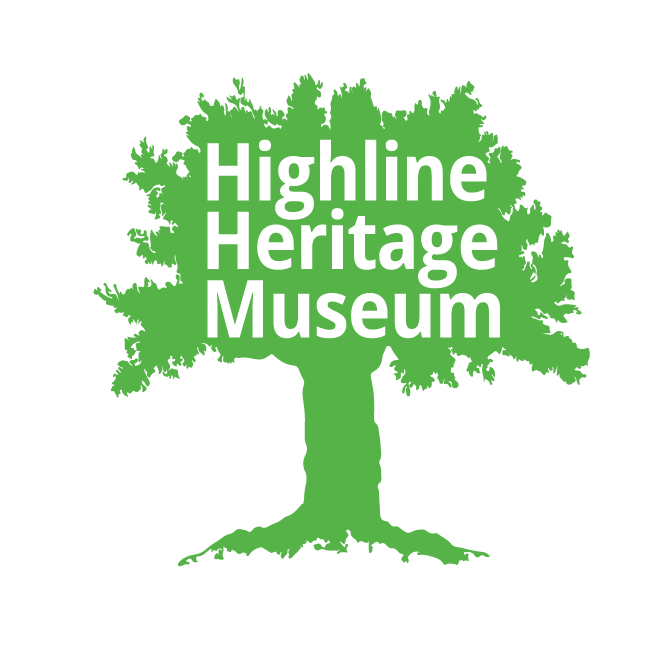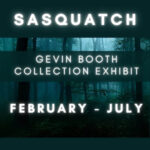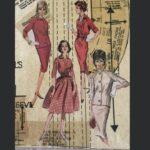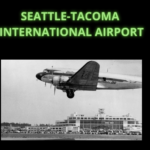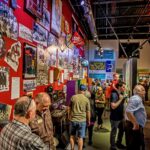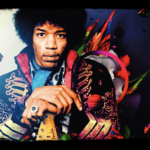|
Oral History recollections of Odd and Georgette Valle. Interviewed by Jean Pugh in July, 2001 |
|
|
Were you born and raised in the Burien area? Odd: We came here to Seattle from Norway, November 17, 1951. The reason we came here was that I was a dentist in the Norwegian Army and I really would have liked to stay in Norway and I had planned for a high position in Northern Norway when nobody wants to stay in Northern Norway. But I wanted to go up and the Minister of Social Health denied it in person. Norwegian …In Germany where we traveling through. We had just been married on June 30th in Ordah and Georgette was learning Norwegian. She had come over bringing her wedding dress and all her stuff. So we got married and then when this Minister of Social Health turned me down for that position she said you go back to the United States, you’ll do better there. That made Georgette very happy. You had been there before? Yes, I come over in 1946, in the Spring, to go to school. I had gotten an offer to go to school through the United States Government and the dental school in Oslo, Norway. It’s a rather a long story. In Norway, in dental school there, unless you parents had a lot of money, or was dentist of position, or some high paid engineer, even if you had the best grades, they wouldn’t admit you. So, in 1945, after the war, when the dental school was opened, I was not admitted. And I knew that many people had very poor grades, from the ….. That’s a school of preparatory to get into any high education facility in Norway. So I talked to a professor at the dental school in Oslo and he took some action. So, some of us were then sent. In fact it was only me that was sent over here alone. And they arranged with the US Army to send me to a military school, a dental school for military personnel in Chicago. But I came over on a cargo ship. It was 134 days from Berlin to Baltimore. So I came two weeks late so they wouldn’t admit me. So then they scoured around and at that time the schools were filled up with military personnel and any of those military personnel with a colonel or higher they were admitted any time to the various schools. So they got me into the University of Minnesota in the fall of 1945. In the meantime I attended the University of Pennsylvania and took organic chemistry. Then I attended at the same time Temple University on Broad Street in Philadelphia and took physics. Of all things I didn’t know you needed physics to get into the dental school. So then I graduated in 1950 and spent 1 year in the military in Norway at the hospital at the base there. Georgette came over in May I think, 1951, and we got married in Orda, June 30. So you met at Minnesota? She had graduated 2 years before in occupational therapy and I had met her at and around the University of Minnesota hospital. Because I was a bus boy there and she ate there and together with 1,000 nurses. So I worked out in the hall. When people had eaten they came into an opening in the wall and put their tray, dirty dishes there, so I put them on an elevator to go down to the wash room and I also worked down there. I worked there for 3 years and got 3 meals a day for free. So that saved an awful lot of money. So in 1951 you decided to come, so how did you pick Burien? We didn’t, but in a sense we picked Burien. I had then a relative, a cousin, up in Ballard and we stopped there first and we didn’t have any money. We had to borrow $10 from a son to stay at a motel up on Aurora Avenue. Then the next day or so, Georgette cashed a check from her dad and we needed some place to stay, so we came up to Burien Gardens Apartments, like so many engineers. And oh, everybody seemed to lived there. So that’s where we moved in. After cashing the check and paying some money down on the apartment. The apartment was $39.50 a month. But we had absolutely nothing, so we went down to White Center at the store there, remember that, and we bought a bed and then brought it to the apartment. And that’s all we had. Georgette: We had some orange crates. Odd: Then I had to find a job. We scouted around. We had bought an old Nash car in Minneapolis. And had nothing but trouble with the transmission, so we rode around. The Norwegians lived up in Ballard and we drove around Ballard and we had offers to start a dentist on Broadway, Dr. Brown and various places, but somehow it would be too far to drive from Burien. And up in Ballard I would like to stay there, but we didn’t find any offices and we didn’t have any money to buy anything so scoured around in Burien and in White Center there was a dentist of Norwegian descent, Dr. Anderson, and we had heard, even back in Minnesota, when people from University of Minnesota came to Seattle they always worked for him. He was busy, so I could get a job there, but there was another dentist ….. Lokken, he had an office in White Center and he needed a dentist so I started working there and made some money. You work on a percentage when you work for another dentist and we made out OK so we could start buying groceries and we had these relatives up in Ballard. They leant us some table and some chairs and various things and little by little it got to be liveable. We bought a couch and some chairs to sit on. Georgette: We had one chair and you sat in it. We ate on, somehow we had some sort of a trunk and we ate on the trunk. Great memories. Odd: But then I didn’t really want to work for Lokken, I wanted to work for myself, so I scouted around and around Christmas time I heard about a dentist in Burien, Dr. Dodge, who had been there for ever and ever in a little wooden building next to, at the time, Joe Owens pliers store. It was a little wooden building. Now there’s a Christian Science Reading Room there. It was next to a shop that your friends, you shopped there all the time, this lady with a dress shop, was there and then we had the Highland Pharmacy building. What was the name, they were patients of mine. I should know. They lived up on Three Tree Point. Jean: Names are so hard to remember. That was on 152nd. Okay. Odd: So that, I was introduced. I met your … he was a businessman. Kind of smart businessman but he was all business. So we looked at the building and the equipment was very old. I met Dr. Dodge once and never met his wife I don’t think, but she was known to be a cat lover. Not one cat, or not two, but awful lot of cats, scouting around her house. So all her people, all of her …. Bragging because of all the cats. Probably very nice and she worked for the ….. So I decided that the rent was reasonable on that building, but Joe Owens, businessman that he was, he thought he should get paid a fee for steering me on to that and very often nowadays you actually buy into a practice. Like I sold my practice and it was based on how busy you are and various things, but Dr. Dodge had just the oldest equipment I had ever seen. I wasn’t going to pay anything and I didn’t. But I did take it over and I paid rent, a small amount of money for what could be used. But I actually arranged with ….. Patterson-Downs Supply Company and I bought real equipment, new chairs and the whole works and you didn’t have to pay anything down. You still don’t pay anything down when you buy any dental equipment. This what year now? This was in the spring of 1952. So that was a writing room. It had been a residence really. One room resident with one bedroom and a little kitchen in the back. The kitchen was the lab where we would make crowns and stuff. But I also had an old chair there. The new equipment was the main room. We had wallpaper put on the walls in the reception room. It was very pretty. And people would come in from the street just to look at the wallpaper. What kind of wallpaper was it? I worked there for 3 years and it was very, very fine. The business was very good. There were practically no dentists in Burien then, right? You had, Dr. Tom Halls and he was in the Army during the war and he had rented the practice to Dr. Burgis who moved out when Tom Halls came back again. So Tom worked there for a little bit on the corner of 152nd and 4th and Dr. Morrison would have been a long time physician, he was also in the same building. It was kind of a medical center. That’s the only dentist that I know of that was in Burien and Tom had been there for a long long time. Did you stay in that building? No, you see that building was kind of shambles and Burien was building up. And then I’d rather have my own building and build something new. So I looked for a lot and it was an elderly house, next to Dr. Wallin’s and this little buildings are called Wallins, the optometrist and stuff was, and Perry West was on the West side of those. And then you had some insurance. Then you had this real estate man who tried to sell me my own lot. I had already bought the lot for $11,000 and he was looking to sell it to me again. So I hired a friend of mine, Ralph E. Miller, Jr. He designed the building to house my offices. Had 1,000 square feet and the other was about 4,000 square feet. And we rented that to Mr. Enloe. Enloe had had prior stores in White Center. Then he didn’t do to well. And then we got two nice fellows that were in partnership. They rented. The building was built in 1955. We started and it was a one story building like most buildings but it was constructed for two stories. The lot cost $11,000 and the building actually cost $39,000. It was quite reasonable. I borrowed all the money from Seattle Trust and Savings Bank. Otis Ramsey was the manager. It was a grumpy man who was the manager before Otis Ramsey, because when we tried to get money for our house in Normandy Park, our first house, then he complained, Oh your bedrooms are too small. That house cost $22,000. A nice house. Beams like you would find in Norway, and windows, and at that time and it’s true the bedrooms were too small. But he lent us the money anyway and then later on we added on to those bedrooms, we had to because they were so small. But I started the business in my own offices in 1955 and stayed there until I retired. Then I sold the building to Bruce Guppy (?). A son of the shoe store person. Either grandson or son. He took that over. Now Dairy Queen was in there some time. Was Dairy Queen there. I remember Dairy Queen being in there somewhere. Were you west of that? Dairy Queen was on the east. That was between this optometrist Wallin and these other medical things. Is your building still there? Who’s there now? Bruce Guppy owns it. There was a dentist who rented it. I sold my practice to Dr. John Muramotso and he stayed there for 1 year. I don’t know what happened but they increased there rent. The rent was reasonable, $1,000 a month. Guthrie might have increased it, whatever. But when I bought that lot that was way out in the sticks. Because the main center was on 152nd, west of that where the bank was and stuff. Then I hesitated to buy the lot in fact because it was way out. Before Bells of Burien, then? Yes it was. We were across from there was kind of a park, a baseball park. The field house was right across there. All the land was owned by someone. I think the Guppy family owned the lot or land there. We had the county council person whose wife was in real estate and think that they made a lot of money, because they were the negotiators and decided. There were only 3 county commissioners and they decided all the planning and all the sales and all of the stuff here in King County before they improved things. So there was a lot of rumors going on of some shenanigans were happening at that time. But we saw Bells of Burien go up of course. Was Ralph Burkhart involved in that? Ralph Burkhart designed that building, yes. It was a beautiful building. But then they changed the whole building later on. It had the barrel roof and they took all that off? Yes. Ralph Burkhart. You must have heard about Ralph Burkhart? Yes, I’ve heard the name. He was a school architect. Highline College and all that stuff. Some beautiful schools out on the peninsula and various cities. The Evergreen Pool. I don’t know about the Rainier Pool. Well, Ralph Burkhart and Ehilers, Ehilers was a of doctors that worked so well together. He had a big company. He was community minded. Like the field house there he wanted to work on that with the Lions Club and we started work on that to get it to move Dr. Ruth’s school. And this is one of the reasons it was moved down there. Do you remember the year? No, I don’t remember the year. Who was president then? I don’t recall. I have all the records. Of the Lions Club? You’ve been in the Lions Club since when? 1957. I was a charter member there. We started out, our first meeting was at Glendale Lutheran Church. That’s where we had the festivities the charter night. We were about 30 persons. Out biggest number was when I was membership chairman and we were meeting down at Elks. There was a big delegation that came from Chinese or Japanese Lions Club downtown and they came visiting. They were not admitted to the Elks. Because no Orientals and no women, in fact they wouldn’t admit Georgette, she was asked to speak there. They did let you in finally didn’t they? Oh yes, “Are you Mrs. Valle?” Oh yeah, so. After that then we started moving out of there and met at Ding How Restaurant and wasn’t spacious enough so we did lose some members. But we did a lot of good for the 4 years. Who were some of your charter members of the Lions Club? I have all the names, in fact. We had an insurance man, Will Simmons who lived up in this area and he was instrumental, he started the club. Then Johnny Cobello. He had the Burien City Garage with his dad. That was the first repair shop out here. It was on Ambaum and Johnny Cobello took it over after his dad and then he sold it to Gwen Quamby who owns it now. Then we had, I have the Charter here also. It’s a good thing to be in a group like that because you get to know a lot of people. You see them every week and you have some fun together and the meeting lasts for about one to 1-1/2 hours or so. So that’s why I have enjoyed it and also we have elected an awful lot of money that we give to charities. Like I’m the Sight chairman. I collect glasses and when people need glasses for people they just call me and I send them down to the Seattle Optometric Center and they go down there and glasses and Lions Club pays for that. So spend around $2,000 a year just supplying glasses for people with children and stuff like that. What kinds of programs do they have that the Lions have done for the City? Like park benches or anything like that? We did that just for the park. And we used to go out as a group and clean up the park, also. Now we have a cleanup Burien day. But we use to do it ourselves a couple of times a year. We use to clear the streets. There was a park on Ambaum. We use to clean that all the time. The little triangle on 153rd and Ambaum? Yes. There use to be a feed store next to it. That’s what it was years ago and then that changed into. I don’t know what they’re selling there now. Across the street from it? No. Just south of it on the same side. That’s past the Log Hall then? Is that right? Yes, that’s right. I wish we could save that Log Hall. Is anybody taking care of that park now? The City does. They cut the size of the road up the street. I’m pretty sure. Where you come up now you saw how 9th street cut into us I think the City does that. That’s really nice. While you were getting your practice started, Georgette were you involved in the dental office too, or were you doing your occupational therapy programs? No, I did help. I was the assistant, the janitor, I was the bookkeeper and I stayed for a year and I was five months pregnant so I assisted him from the time he began until I was five months pregnant with Peter. So I quit in the Spring of 1955. All that time I had terrible morning sickness so it was just very hard to assist him because anything nauseates you then. So I was delighted and the minute I got out of there I didn’t have any more morning sickness. Then I sort of came back a little bit. I assisted until it was 6 weeks and then I gave birth to Peter Valle which was August 17, 1955. It was wonderful. It was a way to get acquainted with people and I remember our first patient. It was a young woman with two little boys. She couldn’t manage the little boys. We had just moved in at 152nd street, 629, we had new furniture and the little boys were very and climbed up and almost knocked over a lamp and all sorts of things. So I thought, is this the way it’s going to be? But we managed that first patient and I don’t think we ever had a patient like that again. Everybody else was pretty well behaved. Odd mentioned the wallpaper that brought people in. What kind of wallpaper was it? It was green and rose. We had a green carpet and we had beige furniture. The walls were rose colored. I let him chose the colors. It was sort of unorthodox for a dental office but it was very cheery. When you moved in, what were the main buildings? You mentioned that Seattle Trust was there and the bank and of course all of the Old Burien Stuff was there. Was there much going on in Old Burien? Joseph Prader had a store right across from the Seattle Trust Savings Bank. He was one of the old timers. Then we had the furniture store. This short fellow, Snyder. We bought some furniture from him. Was that on the north side of the street? On the north side of the street, yes. I don’t know what happened to it. G: His grandson now is part of the hydroplane movement. O: The Burien Hardware was there also. They expanded into a new building eventually. That was next to the Snyder furniture store. Then we had a gas station that was there. That was over on the corner. But I don’t remember that. Buggy Hardware or Buggy Lumber was that still there? That was on 152nd and Ambaum wasn’t it. I don’t remember that. So Burien was a pretty busy place, right? G: Yes it was and you had a Chamber of Commerce and the thing to do was to become the director of the Burien Chamber of Commerce and then what you did you could run for any position and move on to a County position or something. It was a very prestigious position to have. And Burien was really buzzing and busy and of course it helped that hardware store was very, very busy, which is one of the things we need right now. The lunch counter of the Hutton, Highline Pharmacy. That was THE meeting place. And we all gathered around there. It didn’t take very long for us to get our egg salad sandwich. And you could do it in less than ½ hour so you could get back to whatever you were doing in a business. O: Well, they have a commercial club, Chamber of Commerce. What was the name of the short fellow, Snyder. I remember I went with him to one meeting and they were discussing what to do about the business on 152nd. This was before they planted trees and all that stuff and there was a discussion of how wide the sidewalks should be and parking and stuff like that. There were meetings and meetings on that. And finally the County did what the County wanted. And I remember one businessman said, “Well, there’s a lot of business, you need BIG sidewalks.” And one fellow said, “Well, you don’t have much business, you don’t need a sidewalk at all.” This was a commercial club you say? Yes, it was all the businessmen. It was the Chamber of Commerce. I wasn’t a member because I wasn’t in a business as such. I had no interest in that. But it’s amazing how, when I built my building it was on the outskirts and now it’s right in the middle of Burien, or not even in the middle. And all of those buildings that came up on the east side of 4th, they were all built the same. Just to fill a lot. You know, nothing is nice there. Everything should be torn down and stuff and start all over. G: You should come to the meetings and talk about 152nd street. They’ve got it all laid out. And the big argument now is that we do it so that we do not curtail the businesses that are there now and so that the disruption is not too much. And I don’t think it’s going to be that difficult. O: One thing I do remember we went to a theater on Ambaum Boulevard. You know about that theater I’m pretty sure. That was torn down and they built a new theater behind on 153rd and then that. G: It’s still there. That’s the building that Sally’s Design are in and there’s a pizza place that has now extended itself out into the street. They had a sloping floor? G: Yes, and that’s still there. So whoever, if you wanted to remodel and do a theater again you could. O: Well, I was about the 3rd dentist, well maybe the 5th dentist that was in the Burien area and now out in Normandy Park there must be at least 75. Oh my yes. The population has increased quite a bit of course. It’s just amazing. See dentists all over. In fact, down on Ambaum and 4th avenue, there’s a medical center there. Dental offices and physician offices there. We don’t have a big medical dental building. So then, Burien started having problems when Southcenter went in, is that the problem or what happened to Burien since your time? G: Well, as a matter of fact, before Bells of Burien was built, then the land that was there, Fredrick and Nelson was considering coming in. But the price that they wanted for the land was too much and so Fredrick and Nelson decided to go elsewhere. It’s true that when, it was a combination of the development of Southcenter and stores that catered to lesser than, cut-rate businesses came into Burien. And that discouraged other developers from coming in. Then of course, Bells of Burien was certainly a good business and lasted for many many years. And then of course Lamonts bought it and now it Gottschalks. Gottschalks I think is just a little bit above Lamonts and so you’ve got a wider variety of materials in there. So we will soon have a Home Depot I guess? It’s spread out for a reason. The shopping that is Normandy Park and the south come into 160th and they shop at Albertsons, and Trader Vicks. And so it’s a more substantial client and customer that comes into that area. And that’s why it is sought as a business area. O: We don’t shop at Southcenter at all. I haven’t been there for years. I don’t remember when I fought shopping there. We have a lot of stores in Burien and decent prices. Also I do buy some clothing in Des Moines and up in Normandy Park. G: Clothing at Bensons and then Lamonts is very good for sporting goods. You can find just about anything you need. It’s good quality. And then up in White Center we have McClendon’s which is a big draw. O: I go several times a week. That’s a good store. I use to go over to Renton. We need a hardware store in Burien. We really do. Well, Georgette how did you happen to get into politics? Did you go through the Chamber of Commerce route and then on up as you mentioned? How did you happen to get interested in politics? G: Well, I think first I had to get my self registered to vote and I joined the League of Voters and I was curious enough to try to find the Democratic organization. First of all, I was born in Blue Earth, Minnesota and my parents lived on a 320 acre farm and farmed that until 1955 or beyond. So, I had strong agricultural ties and it was the DFL, the Democratic Farmer Labor party in Minnesota. So when I came out here I thought that was the greatest thing in the world and nobody was very impressed, because the laborers here were not impressed with the farmers. Because the farmers seemed to be so far off, they were identified as Eastern Washington. So, there didn’t seem to be any organization or democratic connection at all. So I would say I was sort of unnoticed in the democratic organization. And also, it was not necessarily a time of women. I didn’t come in supporting anybody else. So, I can remember feeling a little unhappy that I wasn’t better received. But, I have some clippings over here that people brought me. We just had our 50th I did in 1957 go as representative of the Federated Democratic Womens Clubs here to Washington, DC. So that was a route and I was active in the Evergreen Democratic Womens Club and chaired it along about 1956 or so and built the club to be 80 members. It was in the area. We had Burien people, Normandy Park people. We’ve had people from Federal Way. We’ve had people from all over that joined it. We had good programs. We did good things. One of the first things I had in Normandy Park was a luncheon for Henry Jackson and I made up a poem and I introduced everybody in the room with a little of their history. He was reasonably impressed. Anybody that’s already got an office and don’t think in terms of being challenged thinks its pretty good to find a rising stars along the way. And I heard about it through other friends who had friends in congress in New York that he had said nice things about me. Then, in the 1961-1962 time I wanted to run for state representative. I went to a meeting in which we then a huge district and we had three legislative representatives and 1 senator. That district went up by Seward Park and went over to the Sound, cutting West Seattle sort of in half. I wanted to run and Luke Graham who then the chair of the Democratic party said why don’t you instead become voter registration chair. So I said Okay and so that was a challenge to go all over the state and to talk to editors. So I stopped in 16 places and many times they would tell me ahead of time when I called that we have a camera and they saw me. And in those days I was better looking than today. So they would bring out the camera give me space and we would talk about and I didn’t do it necessarily identified as a Democrat because we really wanted to, this was when Kennedy was going to be elected and so. I’ll get you that picture too. He came into Boeing Field and got off the plane and said “How’s it going?” He wrote something and was busy writing probably for somebody else and he was a candidate then, Kennedy. Candidate for President. That was how the Democrats, and how the Kennedy brothers were going to win the election was by registering voters. And we did in fact register 100,000 voters here in the state of Washington. So that was really an accomplishment. And it was a close election all over. In 1962, then I decided I would run for election as a state representative. Now you didn’t file against anyone. You were all running at large. So we went and we had 500 signs made and we a huge sort of billboard that I put on the which said Vote for Georgette Valle and I rolled around in that all over the district. I collected $325 from the public. The campaign cost $2,350 and when our 500 signs were all torn down, that was it. We didn’t know any better to go and I was defeated by 320 votes. They were little signs. I wish I had one of them left. That would be wonderful. We learned after that the silk screen and to make our own signs free. We had a sign made and we silk screened and then I selected, then the next time you could run against. It was not yet legal to file against someone but you could go out and I said that Victor Minor, Jr. is a very fine man and he has a very fine family but he’s an ineffective legislator and he sends his speeches that are written by somebody else to the… And then the voters would stand up and read it. And that was permitted. I really didn’t desecrate him but it just seemed to me he could have been more effective than he was. So that time I did win and that was and there was only one session and Governor Evans was the Governor and he didn’t call. You had one session per two years. Unless the Governor called you in for the second year you weren’t in so it was one session. This district you say was a very large district, they hadn’t divided it or anything? That’s right and after that there was a suite that was filed that and we had redistricting down in Olympia and the suite said that some districts were unconstitutional because the senator was representing too many people in contrast to the other senators. Then instead of 99 representatives you had 98 representatives. Then I was redistricted out of that district and then I went into the 30th District and that was pretty well Republican. So Paul Barden took over. He was my opposition and he won. There was about 1,000 votes between us every time which was quite a good election for that district because it was quite Republican. I raised about $20,000 which was considerable for a state representative campaign and it was considerable for a woman. But he raised much more and I was told at the time that he did win that he spent $32,0000 and that was the when Republicans got into banks and everybody in the bank sat down and worked for the Republicans and did their mailings and this sort of thing. And he used 6 cent stamps, that’s how much it cost to mail first class. I couldn’t afford that, but just the same I did one mailing with the bulk rate. I did a lot of door belling. My father came out from Minnesota to help me. We would sometimes be so good at door belling that he would be at the back door and I would be at the front. Eventually in 1972, then we moved and we moved into the district. We moved into an apartment, I was just doing, and I brought my husband and the beds and I was just doing what the men had done. Brock Adams did this, Norm Ackerly did this, without the benefit of their spouse. But in those days you had to have if you were a woman you had to have your spouse with you. But I got thrown off the ballot. That was a very significant and was very hard on the family and not fun. But I never mentioned it. I went right back into politics and never mentioned it. Just kept on going to meetings and this sort of thing, lived by the rules. O: When was this? G: That was in 1970. O: That’s right it was in 1970. I thought you said 1972. G: Well, 1972 was when we actually, that’s when I ran. O: We had moved in here in 1970. G: And then in 1972 then I won. Then the district was the 31st district so I represented the 31st district 12 years. Then the numbers changed. I did lose the election to Bruce Addison for the 34th district in 1982. He was perceived as more the representative and the redistricting put 6 legislators into the same district with 3 position available. So Phil Talmadge and King Lyson agreed who was going to run. And Phil Talmadge won out. Then there was Jeanette Berleen, myself and there was one other that was the other legislator. So all together you were in the legislature for how many years? 28 years. Oh, excuse me, 24 years and then 4 years with the council. So then, you really enjoyed the campaigning part of it? Was that really… Oh yes, I enjoyed the campaigning. If you like meeting people and I can recall when I first ran for office, I would come to the door and I would ask the woman who was a registered voter for her vote and she’d say, “Oh, I have to ask my husband.” I would try to convince her she was capable of making her decision and so, but that changed over the years. People would say, “Oh yes, I will support you Georgette.” And then so I thought, well, I guess Georgette you have to get to the men, so if I would see a man working outside I would go up and speak to him and talk to him just about anything in the world to convince him that you had a mind, you could make decisions, and that were you were personable and that he could have confidence in you as a representative. So sometimes it’s not necessarily just answering questions about political matters, but it is just you as a human being. So anyway, that’s one of the things that I did and Odd was busy in Lions at this point. I remember coming to one meeting in Tacoma where he was the Governor and I came up late from a legislative meeting and came right up and sat at the head table. We worked and one of the things that I did was, we would take the children too, and so it was a way of traveling and I wouldn’t be at every Lions meeting at an International Convention but I would be able to participate. It provided an interesting life. But the intricacies of redistricting have certainly affected my political career. I always had to really struggle. Have you any highlight of your legislative life, anything that you are particularly proud of or especially remember? Oh, yes, the Washington Indoor Clean Air Act, which is the No Smoking Act. I fought for 12 years in Olympia and finally passed it. You never know how much, in the days before the Public Disclosure Commission, you would never know how much tobacco money was spent against you. Or in other words how much monies were received from the tobacco companies by your opponent. But one of the things that I try to do is to be very friendly with all the tobacco lobbyists and I tried to instill in them some sort of likeability as far as I was concerned. Rather than take them on head on. I think didn’t understand how serious I was, which was great. Of course the fans, fresh air for nonsmokers, the American Lung Association helped me a great deal, asking legislators to fill out the surveys on how they felt about the legislation. I had been defeated and I came back in in 1984 and Nancy West was very nice to let me take this legislation because it was pretty well going to pass that particular session. O: At the Alaskan meeting yesterday they mentioned you and especially this clean air non smoking act first thing. So you’re even better know than I am. G: It’s an interesting thing and I’ve never bragged about it and I never talked about it at home in the campaign here because a lot of the Democrats were smokers. And a lot of them were, let’s put it this the Democrats, they agreed with me on other issues and they probably didn’t agree with me. Not everybody agreed with this. So I didn’t talk about it in my own district. So a lot of people don’t necessarily know this. But I remember in one of the last parades that I was participating in, 34th district was in West Seattle, one woman went like this. And I said “What’s the matter?” and she said “I’m a smoker.” She recognized you. You can’t win all of them but you certainly put up a good fight on that many years. You know we hadn’t realized how long it’s taken to do this. G: I would go into the rules committee and there articles written about how I’d go into the rules committee and wave the smoke away and say I sorry I can’t hear, I can’t see you, and John Bacnarial would be smoking and John smoked as an appropriations chair in a meeting when Fred Hutchinson came and testified and I thought that was abominable. Now he doesn’t smoke. He doesn’t smoke and he doesn’t drink, that’s what I hear. So now tell me how you happened to get into Burien’s City Council? You just felt there were things you needed to do? No, I was asked to run by Dr. Kennelly and people. There was a great deal of apprehension at that time about the comprehensive plan and they want somebody that held tight on the comprehensive plan. So, I ran and I surprised a lot of people, opponents and supporters by working with the opposition and trying to find solutions and this sort of thing and trying to get out of this position of there being a them and us. One of things that you can do in Olympia is you can work with somebody on one issue and you don’t necessarily work with them on another issue. But you don’t. It doesn’t split your friendship. You’re thankful for the fact that you could work on one issue or two issues or three issues and then you differ on the other issue. So I worked with Larry Gilbert quite well, I saw him as a good mind on the City Council, even if I didn’t always agree with him. I thought it was too bad when he quit because I thought that he was doing a good job and you need to have a healthy opposition sometimes to make decisions because you might have overlooked something. So I don’t mind a healthy opposition as long it doesn’t hold up the process of City Council Governments. It appears to me that there is so much negativism in Burien? Is that just me or is that really true? Everything that we like to do there’s so much opposition. G: Well, it is people who get the headline, now Mark Fitzner is a young man who doesn’t come to, I’ve encouraged him to come meetings and he has come to some meetings but he certainly hasn’t been a participant. Now we’re trying to get him in so he can listen to the entire story of the development of 152nd and I don’t think there is as much negativism. If you read the Highline Times now you are going to hear some negative comments but it’s, people don’t understand the business of saving your money and then spending it on capital projects. They don’t understand that you don’t use that money which is your reserve fund. You use it only for, you don’t use it for operating funds. The revenue that you take in must be spent for operating expenses and if you don’t get enough then you have to cut expenses or find another way. O: You know darn well that there’s a group of three legislators on the council that actually worked together all the time and are posing things most of time and if it isn’t one it’s another. G: Well, it’s that they want more police. And we are now spending 58%/59% of our budget on police right now. You’re now going to have, there are other ways of cutting down crime. That new skateboard park has cut the vandalism and the juvenal delinquency and that sort of that that has existed within the Park and Ride. The kids are busy. And that’s the sort of thing that I like to see. And I’ve spent my time now working on parks and establishing the art commission, establishing the park board. And now of course I’m heavily involved in the environmental science center at Seahurst Park. We’ll see, but it appears, because money is coming from the state through the City of Burien that in some way we’re going to have some connection with the City of Burien. Now that doesn’t bother me at all because it’s very hard for an institution to exist separately outside the City. So it doesn’t bother me at all. On the 24th I’m going to be going in and talking about it, but it will be a surprise to some people, I know that. Now you mentioned your science educational center, that’s going to be in the Park? Where is the property located? G: Well, it’s going to be on the grassy knoll that is between the upper parking lot and the road that goes down to the park. There’s bench there. It’s going to be right in that area. Is that connected in any way with the marine sciences building farther away? G: Well, it will work in conjunction with it but in no way is a duplication of services and we want to make that clear. For example, now at the end, there could be classes all the way through summer for K through 12 students. It would be wonderful. And kids don’t always have, especially the kids that are between 12-13, they’re not old enough to work and there are all sorts of things we can do to help them be cognizant of cleaning up the park and being good stewards of the park. And then I would like to see the Community College come in offer courses here so that when people are done over at Marine Tech Center they could just walk right over and go in. I think it would just be wonderful. And there’s no reason that you can’t have other classes that are K-6. You can have that in the same building and I’ve went into a high school in Moscow and here is kindergarten to high school all the way through in one building. And nobody seemed to think anything about it. They had there classes and they just went to their classes. They even had a swimming pool there. So you can do it. But over in Belfair, it’s a wetlands down there in connection to the school and kids have wonderful opportunities down there. Education classes. G: Belfair, where is that now? Over on Hood Canal. Well, you’re probably getting tired of talking. It’s wonderful what you have to say. You brought clippings here. The 50th anniversary. That was in Norway. And here you are in 1961. G: And that was Letty Gudmunson, you must have heard of her on the Highline Times. I don’t believe I was even getting the Highline Times at that time. Probably got the White Center News. And that was the Burien parade. Senator Hemstad, a Republican, called from Olympia and said I’ve got a Norwegian guest coming, could you take him. So I said fine, I’ll take him and put him in the parade with me. So there he is. His name is ______. And he’s now, I heard, somebody met him and he said is “Georgette Valle in the group?” And they said yes. So he still remembered by name. Burien parades are still wonderful thing, aren’t they? G: Oh, absolutely. |
|
